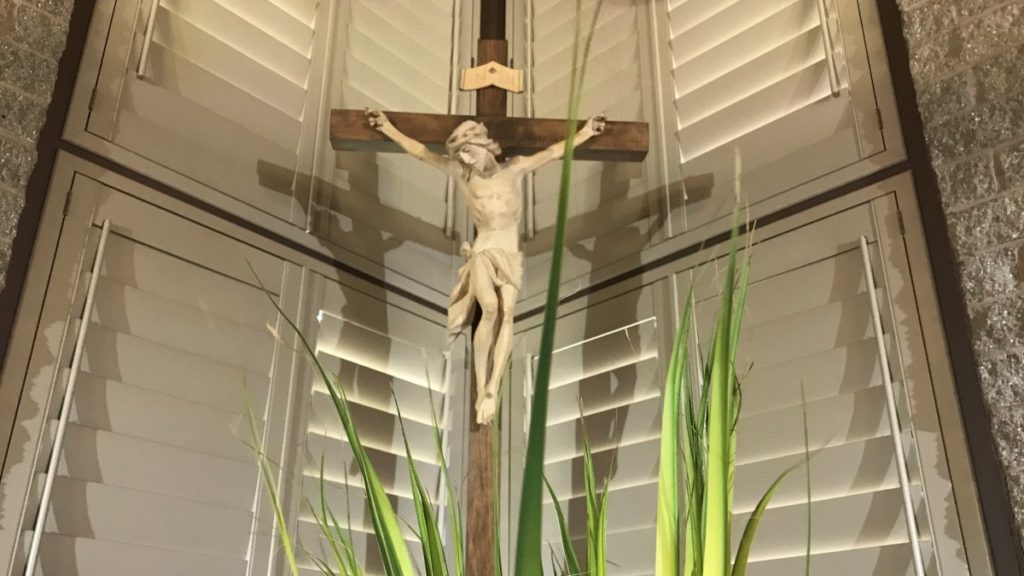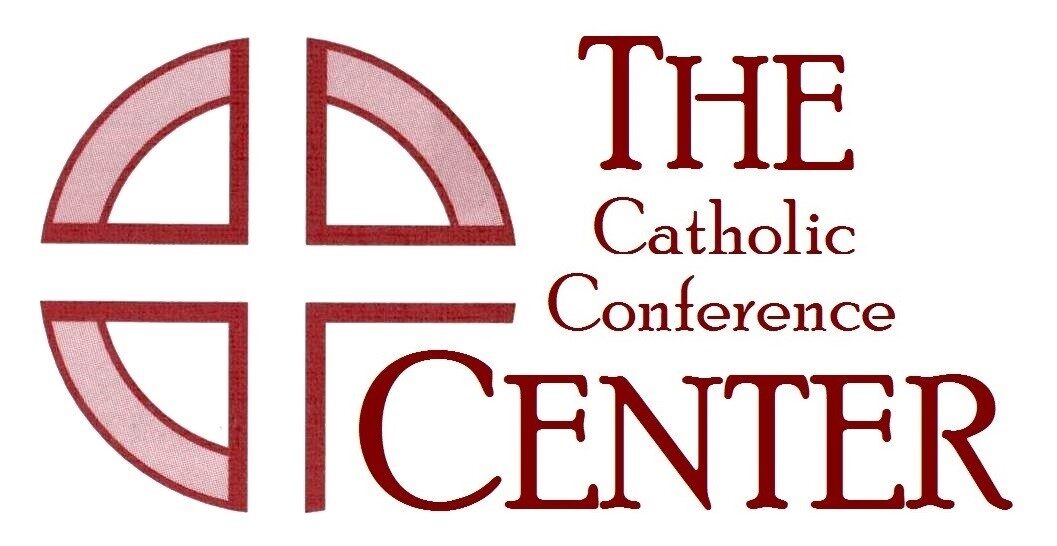Palm Sunday Message
Deacon Scott Gilfillan

We enter this holiest of weeks pointing the spotlight on two powerful Christian symbols: the palm branch and the cross. Though very different – one used to exalt, the other used to disparage – both in their own way have become for Christians striking symbols of hope. In fact, we might call Palm Sunday a Liturgy of Hope.
The people were filled with hope the day Jesus rode into Jerusalem. They waved palm branches to signal the arrival into Jerusalem the long-awaited Messiah. They laid palm branches on the road providing a royal carpet for his feet, an honor only reserved for kings. They hoped that Jesus would bring an end to the powerful forces that oppressed them. They hoped that Jesus would finally set them free. The palm branch was a symbol that God has finally fulfilled the hopes and dreams of the captive people.
The palm branch should also be for us a symbol of hope. In a way, we are also put down and imprisoned by powerful forces. These forces could be outside of us: a boss that doesn’t care, a hospital or a school that won’t help, a friend or an acquaintance that betrays. These forces could also be prisons of our own making: eating or drinking too much, losing patience with other people, a desire to be in control. Just as the people in Jesus’ time hoped for a messiah to set them free, we too need to hope for that same messiah to ride into the Jerusalem of our hearts. Just as the people provided a royal entryway for Christ the King, so too must we provide a royal pathway for Jesus to enter our house as an honored guest.
The palm branch is a symbol of hope, a hope that Jesus can and will improve the circumstances of our life. Yet we must open the city gates. This symbol should prompt the question: What do I need to do to prepare a way for Jesus to enter my heart?
The second symbol of hope in this liturgy is the cross. It is a different kind of hope, one steeped in the mystery of life and death, sin and reconciliation. Some say the cross is a scandal and a disgrace. Some say the cross is not a symbol of hope, but a symbol of despair. Yet when Christians see the cross, they see the depths of God’s love.
It is not until we stand at the foot of the cross, with our own suffering and guilt, that we begin to understand this powerful symbol of hope.
Think of the Roman centurion after he had participated in the gruesome task of crucifying Jesus. He stood at the foot of the cross, looked up at the dead body, and came to a profound realization. He proclaimed what no one else in the gospel had yet put into words: “Truly, this was Son of God.” Words of hope in the midst of despair. God in the end will triumph.
The cross symbolizes the hope that no matter how horrible things appear, God will have the final word. Hope that no matter how horribly I have behaved, God will be at my side ready to forgive my worst offenses. To experience this hope, we need to come close to the cross of Jesus. When we see this powerful symbol of hope, we must ask ourselves: “What pain of your past or present do you need to lay at the foot of the cross?”
The cross and the palm branch are powerful symbols of hope. Hope is a powerful virtue. Without hope, there is despair. And when we despair, we cannot see God.
Think of two characters in the Passion narrative: Judas and Peter. They both betrayed Jesus. Judas killed himself, he hung himself from a tree. Peter, however, continued on with his mission as a disciple. What made the difference? Hope. Judas lost all hope. He reasoned that what he did was so horrible that God would never forgive him. What Peter did was also horrible, just as bad as Judas, not denying Jesus just once, but three times. Yet Peter endured his shame and guilt and pain. What allowed Peter to go on? Hope. Maybe, just maybe, God might give him another chance. Hope makes the difference between hanging on a tree to die and continuing to do the work of God.
Jesus on the cross cried aloud in agony. He had taken the sin of the world upon his shoulders and perhaps for a brief moment, felt the tragic effects of sin, an extreme separation from God. Perhaps for a brief moment, felt despair and abandonment. But he never lost hope that God was in control, hope that God will make things right.
Many families will take their blessed palm branches and wedge them behind a crucifix that is hanging on the wall. I encourage you to do the same. When you walk by these two symbols, may they bring you hope. May they bring you the hope that Jesus will ride triumphantly into the Jerusalem of your heart so that powerful forces will never have dominion over you. May they bring you the hope that nothing you’ve done, nothing you are experiencing, nothing at all will ever separate you from the love of God.
